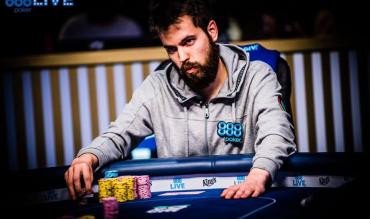Do you look like a deer in the headlights with sweat pouring down your brow whenever you bluff?
Are you able to disguise the strength of your hand when you hold the nuts?
Having a “Poker Face” is key to becoming a successful player. So, 888poker has offered some tips and tricks on how you can develop one.
Here’s a list of some tips and tricks to create a poker face. We’ll also teach you how to maintain it while playing.
The better your poker face, the better chance you have of being a successful poker player!
7 Tips to Create and Improve Your Poker Face
- Understanding Your Poker Face and Controlling Expressions
- Identify Your Tendencies to Help with Decision-Making
- How Identifying Body Language Exposes the Truth
- Practice Dissociation to Focus Mind and Calm Emotions
- Consistency is Key for Developing a Poker Face
- Using Speech Play to Get the Right Response
- Dress to Impress – What You Wear Matters
1. Understanding Your Poker Face and Controlling Expressions

A poker face refers to a similar impassive expression. It disguises both your intentions and the strength of your hand.
You want to have a poker face so your opponents cannot determine whether you’re bluffing or have the nuts.
- Say you smile and shake every time you have a good hand.
- Conversely, you look like a deer in the headlights with sweat pouring down your brow whenever you bluff.
Suffice it to say, the other players at the table aren’t going to have much trouble reading you.
Without a poker face, you’re prone to give away a ton of information. In a game of incomplete information, this knowledge is quite valuable.
How fast you act to what your eyes are seeing could very well be the difference between winning or losing a big pot.
2. Identify Your Tendencies to Help with Decision-Making

At the poker table, everything you do, whether you know it or not, conveys information. The goal is to pick up on your opponent’s tendencies (AKA “tells”) and use that information when deciding what to do.
Likewise, your opponents are trying to do the exact same thing to you. So, it’s of the utmost importance to be self-aware of your own tendencies.
- For example, have you noticed your heart beats a little faster whenever you bluff?
- How do you respond to that?
- Are you able to sit still like a statue, or do you have the jitters?
- Maybe your hand trembles a bit when you put out chips.
If your opponent is paying attention, they may pick up on such details.
- How about your eyes?
- What do they do in different scenarios?
A lot of players unintentionally glance at their chips whenever a card hits that they like. Perhaps they’re subconsciously taking stock of how much they’ll be able to bet.
Conversely, a lot of players stare at the board when a card fails to help them. Perhaps leaving them in a stupor, wondering why lady luck left them high and dry.
The first step in developing a poker face is to take stock of your own tendencies.
Act to safeguard against them.
3. How Identifying Body Language Exposes the Truth
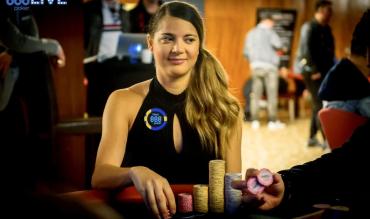
We talked about it a bit above with the trembling hands and what the eyes reveal. But that scratches the surface when it comes to body language.
There are literally books devoted to the topic. (We recommend you check What Every Body is Saying by former Joe Navarro, a former FBI special agent in the area of counter intelligence and behavioural assessment. He is recognised as one of the world's leading experts on non-verbal communications).
Take time to learn about poker tells, especially as it relates to body language.
The benefits are twofold –
- You what to look for when playing against opponents,
- You’ll also pick up on the non-verbal tells that you may be giving off.
Like we said above, the first thing you need to do is recognise the stuff you need to hide behind your poker face.
4. Practice Dissociation to Focus Mind and Calm Emotions
Disassociation is defined as a break in how your mind handles information. You may feel disconnected from your thoughts, feelings, memories, and surroundings.
It can affect your sense of identity and your perception of time.
In “real life”, it’s usually not a good thing, but it’s a valuable tool when it comes to poker.

That’s because poker can be an emotional rollercoaster. The game is often comprised of big swings. Going from the euphoria of winning to the gut-wrenching disappointment of losing is something everyone handles differently.
Truth be told, a lot of players don’t handle it well. Many will allow their emotions to negatively interfere with their play (AKA “tilt”).
If you’re able to disassociate yourself, you can eliminate the emotional element from your game.
- That means less anger when losing, but also less of a high when you’re winning.
- You can better maintain an even keel, which is generally beneficial to anyone’s game.
Now, dissociation isn’t easily achieved. It’s undoubtedly something that’s easier said than done. But if you practice and have the self-awareness to cap any emotions, you’ll be headed in the right direction.
As it relates to a poker face, disassociation cleanses the palate.
Think of some things that may happen when you’re winning (smiles, giddiness, etc.) or losing (anger, bad posture, frowning, etc.).
When you’re disassociated, none of those things should happen.
It makes it all the more difficult for your opponents to read you.
5. Consistency is Key for Developing a Poker Face
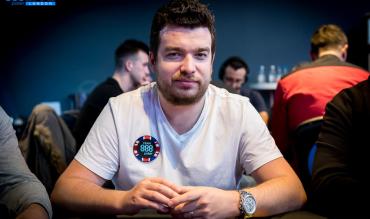
There is no “one size fits all” poker face as there are numerous ways to portray yourself at the table. Like former WSOP champs Phil Hellmuth and Chris Ferguson, some poker pros often don sunglasses and hats.
They then sit stoically, often with hands clasped out in front of their face and try not to give off any information. They’re like a statue.
Others, like Daniel Negreanu and 888poker Ambassador, forgo accessories and instead present themselves for all to see.
However, they’ve learned to control their emotions, so trying to read what’s going through their mind is a guessing game. They’ve mastered the art of the poker face.
The key is to find what works for you.
- Some players aren’t comfortable when others stare them down.
- So, if eye contact isn’t your strong suit, a pair of sunglasses can help.
- Others are more comfortable glaring at their opponents and don’t need shades.
Once you find what you’re comfortable with, work on refining it. You could even take a page out of Chris Ferguson's book.
He would often sit in front of a mirror to perfect his poker face by developing a movement routine. (He’d examine how he’d reach for and place chips, where he’d keep his hands when they weren’t being used, etc.).
Finally, perhaps the best way to improve your poker face is to rely on friends.
Ask them for feedback on your actions and how you present yourself.
Take that information and use it to your benefit.
6. Using Speech Play to Get the Right Response
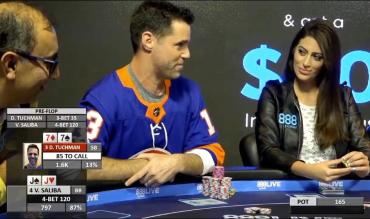
Poker is a social game, so it’s no surprise that a lot of conversation takes place at the table. Daniel Negreanu is a master of table talk. He often calls out his opponent’s hand, getting them to do exactly what he wants.
During the 2016 WSOP Main Event, Will Kassouf infamously used “speech play” to annoy his opponents. In many instances, his actions threw them off their game.
Most players don’t carry on a conversation during a hand, but some do. Maybe it’s just to be friendly, but more than likely it’s because they’re trying to get information to manipulate you.
If you engage by responding, you open yourself up to being exploited. Of course, if you’re confident in your own speech play, you may be able to turn the tables by being the superior fast talker.
Generally speaking, the rule of thumb is it’s better not to say anything. You’re more likely to give away telling information than gain anything.
There’s an art to speech play.
Unless you’ve mastered it, your poker face will benefit by simply keeping your mouth shut.
7. Dress to Impress – What You Wear Matters
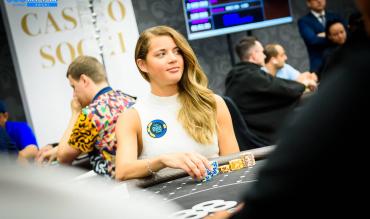
While this article has focused on the face, we’ll end things by discussing something else – your body. You’ve got to cover it with something. Whether you realise it or not, your clothing is going to give information to your opponents.
They’ll form a first impression based on what you’re wearing. If you’re aware of that fact, you can use it to your advantage.
- For example, say you sit down in sweatpants, headphones, and a backpack. It doesn’t take a genius to figure out you’re probably an experienced player who has come to play. That’s the “uniform” of young poker pros who come prepared for a long grind.
- Say you dress conservatively, in dress pants and a long-sleeved button-up shirt. The other players may peg you as someone well put together - someone who will play straightforward and tight.
- Conversely, say you come in looking like a slob, maybe it’s shorts, a t-shirt and unkempt hair. Your opponents are likely to assume you’re someone who is laid back, perhaps even in the way that you play.
The point is you may want to consider dressing in a manner to throw off your opponents. If you’re a great player, don’t wear clothes that immediately let the other player know you’re a pro.
Instead, dress like a tourist, so you come across as easy money.
Poker is a game of incomplete information. The more you have, and the less your opponents have, to work with, the better.
Recognise that everything you say, do, and wear could give others crucial information.
Do whatever you can to hide it – don’t let them read your poker face!
